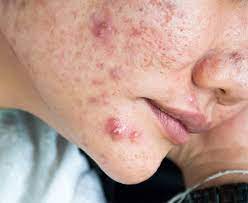
by laraibnaeem2005 | Aug 16, 2025 | Health
Many individuals ask can acne treatment improve skin texture while also controlling breakouts. Acne treatments are not only effective in reducing pimples but can also enhance skin smoothness, minimize scarring, and improve overall appearance. Understanding how treatments work, what types are available, and how to use them effectively helps achieve clearer, healthier, and more refined skin. This article explores acne treatments, how they work, their importance, types, preparation and aftercare, ideal candidates, risks, benefits, frequently asked questions, and strategies to improve skin texture while managing acne.
What Is Treatment and How It Works?
Acne Treatment In Dubai(علاج حب الشباب في دبي) involves methods designed to reduce pimples, inflammation, excess oil, and clogged pores. Effective treatments target the underlying causes of acne, such as bacteria, hormonal imbalances, and dead skin cell accumulation.
Key mechanisms that improve skin texture include:
-
Exfoliating dead skin cells to smooth rough patches
-
Reducing inflammation and redness for even skin tone
-
Promoting skin healing to minimize scars and bumps
-
Controlling oil production to prevent clogged pores and uneven texture
Understanding can acne treatment improve skin texture helps individuals select products that not only fight breakouts but also enhance the skin’s overall appearance.
Importance of Acne Treatment:
Consistent acne treatment is essential for achieving both clear and smooth skin. Proper care prevents permanent scarring, pigmentation, and irregular texture.
Key benefits include:
-
Smoother, more even skin surface
-
Reduced breakouts and inflammation
-
Minimized scarring and hyperpigmentation
-
Enhanced confidence and appearance
Knowing can acne treatment improve skin texture ensures that your skincare regimen addresses both acne management and aesthetic goals simultaneously.
Types of Acne Treatment:
Different acne treatments offer varying effects on skin texture depending on their active ingredients and method of application:
-
Topical treatments: creams, gels, and serums with retinoids, salicylic acid, niacinamide, or benzoyl peroxide exfoliate, unclog pores, and promote cell turnover
-
Oral medications: antibiotics or hormonal therapies reduce inflammation and bacterial growth internally
-
Laser and light therapies: improve skin texture by stimulating collagen and reducing redness
-
Chemical peels: acids like glycolic or lactic acid exfoliate and smooth the skin
-
Natural remedies: plant-based or soothing ingredients support healing and reduce irritation
Understanding can acne treatment improve skin texture allows individuals to choose treatments suitable for their skin type and concerns while preventing dryness or irritation.
Preparation and Aftercare:
Proper preparation and aftercare are crucial for improving skin texture while using acne treatments.
Preparation tips:
-
Cleanse skin gently to remove impurities before applying treatments
-
Avoid harsh scrubs that may damage the skin barrier
-
Perform patch tests when using products with strong active ingredients
Aftercare guidelines:
-
Apply non-comedogenic moisturizers to maintain hydration
-
Use sunscreen daily to protect sensitive skin and prevent pigmentation
-
Avoid picking or squeezing pimples to prevent scarring and texture damage
-
Maintain hydration, a balanced diet, and a healthy lifestyle to support skin renewal
Following these steps ensures that can acne treatment improve skin texture safely and effectively.
Ideal Candidate for Acne Treatment:
The ideal candidate for acne treatments that enhance skin texture includes:
-
Individuals with mild to severe acne seeking smoother, healthier skin
-
Those committed to consistent application of treatment products
-
People with skin that tolerates active ingredients without excessive irritation
-
Individuals willing to follow supportive lifestyle habits to maintain skin health
Selecting the right candidates ensures that can acne treatment improve skin texture is achievable without adverse effects.
Risks and Benefits:
All Acne Treatment(علاج حب الشباب) carry benefits and potential risks, which should be considered to optimize skin texture improvement.
Benefits:
-
Clearer, smoother, and more even skin
-
Reduced inflammation and redness
-
Improved overall appearance and confidence
-
Prevention of long-term scarring and pigmentation
Risks:
-
Redness, peeling, or dryness from strong topical treatments
-
Irritation or sensitivity from acids, retinoids, or peels
-
Overuse can damage the skin barrier if hydration is neglected
-
Temporary sensitivity after laser or chemical procedures
Being aware of these factors ensures that individuals can safely determine can acne treatment improve skin texture while maintaining healthy skin.
Frequently Asked Questions:
How long does it take to see texture improvement?
Visible changes in texture usually appear within 4–12 weeks depending on the treatment and acne severity.
Can makeup be used while improving skin texture?
Yes, but choose non-comedogenic, lightweight products to avoid clogging pores.
Do natural remedies help with skin texture?
They can complement treatments but are generally less potent than topical or procedural therapies.
Can multiple products be combined safely?
Yes, but monitor for irritation and avoid overlapping strong exfoliating ingredients.
Does lifestyle affect skin texture improvement?
Yes, hydration, diet, sleep, and stress management enhance results and support long-term skin health.
Conclusion:
Understanding can acne treatment improve skin texture is essential for achieving clearer, smoother, and healthier skin. Selecting the right treatments, following proper preparation and aftercare, and maintaining supportive lifestyle habits maximize results while minimizing risks. By considering treatment types, benefits, risks, and ideal application routines, individuals can enhance skin texture, reduce acne, and enjoy radiant, confident skin.
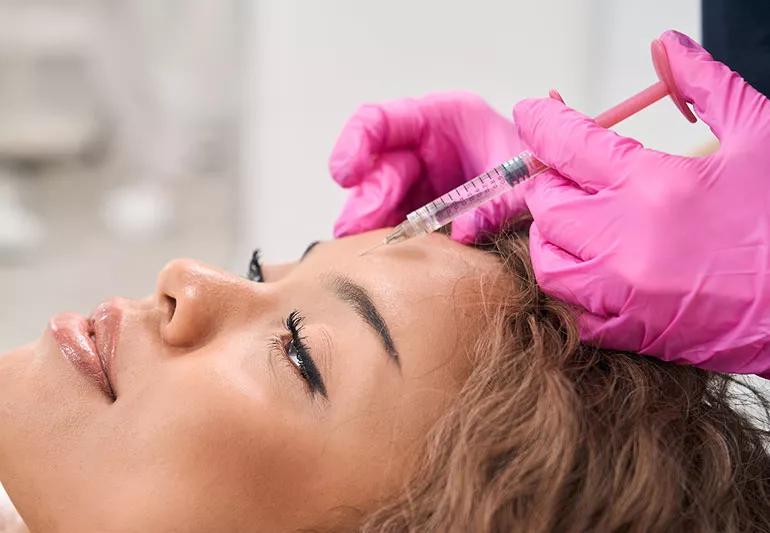
by laraibnaeem2005 | Aug 15, 2025 | Eye Care
A common question for individuals considering cosmetic treatments is, how much time does a Botox session take. Botox Injection In Dubai(حقن البوتوكس في دبي) is a widely popular non-surgical treatment used to reduce wrinkles, fine lines, and signs of aging. Knowing the duration of a session, along with understanding how Botox works, its benefits, preparation, aftercare, and expected results, helps patients plan their visit and manage expectations. Proper knowledge ensures a smooth experience and optimal outcomes from this minimally invasive procedure.
What Is Botox Treatment and How It Works?
Botox is a purified neurotoxin that temporarily relaxes the muscles responsible for dynamic wrinkles. By blocking nerve signals, Botox reduces muscle contractions that cause lines, including forehead wrinkles, frown lines, and crow’s feet. The procedure is quick, minimally invasive, and generally requires no downtime, which makes it convenient for patients seeking effective results without surgery.
The importance of Botox extends beyond wrinkle reduction. It not only smooths existing lines but also prevents deeper wrinkles from forming over time. Understanding how Botox works helps patients make informed decisions about their treatment, ensuring that they follow proper preparation and aftercare protocols to maximize the effectiveness of their session. Botox is also utilized for medical purposes, such as managing chronic migraines and excessive sweating, demonstrating its versatility and safety.
Types of Botox Treatments:
Botox treatments can be customized for cosmetic or therapeutic purposes. Cosmetic Botox targets wrinkles and fine lines, while therapeutic Botox addresses medical conditions. Common cosmetic treatment areas include:
-
Forehead lines
-
Frown lines between the eyebrows
-
Crow’s feet around the eyes
-
Smile lines or nasolabial folds
-
Chin dimpling
-
Neck bands
The time required for a session depends on the number of areas being treated and the complexity of the treatment plan. A focused session for a single area, like the forehead, typically takes only a few minutes, while multiple areas may extend the session slightly. Proper planning ensures each targeted area is treated effectively.
Preparing for Botox and Aftercare:
Preparation and aftercare are essential for achieving optimal results. Key steps to consider before and after your session include:
Dos:
-
Keep the skin clean and free from makeup
-
Stay upright for at least 4 hours after injections
-
Follow provider instructions for skincare and daily activities
-
Schedule follow-up sessions as recommended
Don’ts:
-
Avoid rubbing, massaging, or applying pressure to treated areas for 24 hours
-
Refrain from strenuous exercise, saunas, or heat exposure immediately after treatment
-
Avoid alcohol, blood-thinning medications, and anti-inflammatory drugs a few days before and after your session
Following these dos and don’ts helps ensure the Botox settles correctly in the targeted muscles and maximizes the smoothing effects while minimizing bruising or swelling.
Ideal Candidate for Botox:
The ideal candidate for Botox is an adult seeking non-surgical solutions for wrinkles, fine lines, or certain medical conditions. Considerations include:
Understanding the session duration allows candidates to plan their visit without feeling rushed and ensures that each treated area receives precise attention. Adherence to preparation and aftercare instructions ensures safe and effective results.
Risks and Benefits:
While Botox Injection(حقن البوتوكس) is widely regarded as safe, it is important to understand both benefits and potential risks:
Benefits include:
-
Reduction of wrinkles and fine lines
-
Preventive effects against future wrinkles
-
Quick, minimally invasive procedure with minimal downtime
-
Natural-looking results when administered correctly
-
Can be combined with other treatments for enhanced results
Potential risks include:
-
Mild bruising, redness, or swelling at injection sites
-
Temporary headaches or flu-like symptoms
-
Drooping eyelids or asymmetry if injected incorrectly
-
Rare allergic reactions
Being aware of the session length and following all guidelines minimizes risks and ensures that Botox provides smooth, long-lasting results.
Frequently Asked Questions:
How much time does a Botox session take?
A typical session lasts 10–30 minutes, depending on the number of areas treated and the complexity of the plan.
How long do Botox results last?
Usually 3–6 months, with follow-up treatments recommended to maintain results.
Does Botox prevent wrinkles?
Yes, by relaxing facial muscles, Botox prevents the formation of deeper lines over time.
Is Botox safe for all skin types?
Generally yes, provided there are no underlying medical conditions or allergies.
Can multiple areas be treated at once?
Yes, multiple facial areas can be treated safely in a single session when administered correctly.
Conclusion:
Knowing how much time does a Botox session take helps patients plan their visits and set realistic expectations. Most sessions are quick, usually ranging from 10–30 minutes, depending on the areas treated. Following proper preparation and aftercare guidelines, including avoiding pressure on treated areas and refraining from strenuous activity immediately after, ensures Botox works effectively and provides long-lasting results. Botox is a minimally invasive, versatile treatment that smooths fine lines, reduces wrinkles, and enhances facial aesthetics. By adhering to instructions and attending follow-up sessions, patients can enjoy a refreshed, youthful, and natural-looking appearance with minimal disruption to their daily routine.
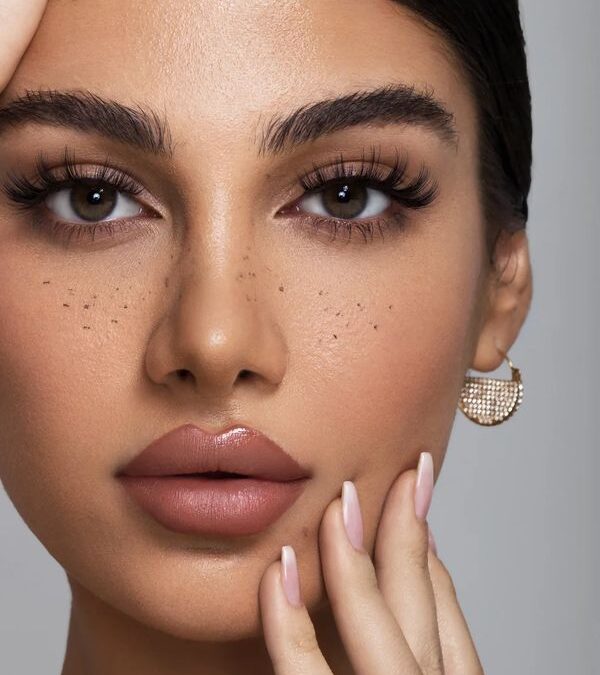
by laraibnaeem2005 | Aug 15, 2025 | Health
Russian lip fillers have transformed the world of non-surgical aesthetics, offering a unique and refined way to shape the lips with lift, definition, and a flat-profile silhouette. While the initial results can be striking, many users begin to ask, how often should you get Russian lip filler maintenance? Understanding the longevity of the treatment, how your body processes hyaluronic acid, and what signs to look for when it’s time for a touch-up are all essential to maintain the sculpted, lifted look this technique provides. Whether you’re new to fillers or have been maintaining your results for years, this guide breaks down everything you need to know about Russian lip filler maintenance frequency and how to preserve those beautiful results.
What is the treatment and how it works?
Russian Lip Fillers In Dubai(حشوات الشفاه الروسية في دبي) treatment uses precise micro-droplet injections of hyaluronic acid-based dermal fillers placed vertically into the lips. The technique is designed to increase vertical height rather than horizontal projection, giving the lips a heart-shaped, doll-like appearance with a prominent Cupid’s bow and a flat side profile.
Unlike traditional fillers that spread evenly across the lip volume, this method targets central lift, emphasizing structure and symmetry. The filler integrates with the lip tissue, binds water molecules, and provides immediate plumpness and definition. However, like any hyaluronic acid filler, the body naturally metabolizes the product over time.
How long Russian lip fillers last:
-
Most patients notice full results for 6 to 9 months
-
For some, effects may last up to 12 months
-
The lifted shape and definition may begin to fade around month 6–7
-
Natural metabolism, lifestyle, and hydration levels influence longevity
Maintenance frequency will vary by individual, but understanding how your body responds is key to planning timely touch-ups that preserve your results without overfilling.
Importance of maintenance and why timing matters:
Russian lip filler maintenance is essential for preserving the unique vertical lift and structured shape of the lips. Without proper maintenance, the filler gradually dissipates, causing a return to your natural lip contour. While the change is subtle and gradual, many people notice that the Cupid’s bow softens, the lifted effect diminishes, and the volume appears less defined.
Why timely maintenance matters:
-
Maintains the vertical lip architecture created by the Russian technique
-
Prevents noticeable fading or asymmetry as filler dissolves unevenly
-
Allows smoother transitions between treatments without dramatic changes
-
Avoids product build-up from overlapping filler layers
-
Reduces the need for full correction or dissolving in the future
Unlike overfilling, well-timed maintenance enhances longevity without risking unnatural results. Skipping too many sessions can lead to uneven results or require restarting the shaping process altogether. Most clients benefit from routine assessments every 6 to 8 months to determine when a top-up is necessary.
Types of filler maintenance and treatment timelines:
There are several approaches to Russian lip filler maintenance, depending on your aesthetic goals, anatomy, and how your body breaks down filler over time. Maintenance doesn’t always mean full-volume refill — sometimes, a mini top-up or shape correction is all that’s needed.
Types of maintenance treatments:
-
Full refresh (every 9–12 months): Reinjecting to restore volume and shape
-
Mini top-up (every 4–6 months): Small amount added to maintain definition
-
Contour reshaping: Focused on restoring Cupid’s bow and lip borders
-
Symmetry correction: If one side fades faster than the other
-
Dissolving old filler (as needed): When layers begin to interfere with shape
Typical filler maintenance timeline:
-
First 2 weeks: Initial swelling settles, results emerge
-
4–6 months: Minor fading may begin, especially in active individuals
-
6–9 months: Time for top-up or reassessment
-
12+ months: Likely need full re-treatment or reshaping
Consistency in maintenance is key to preserving the signature lifted Russian lip effect while avoiding unnatural buildup.
Preparation, aftercare, and ongoing lip care tips:
Maintaining Russian lip filler results isn’t just about getting injections on time — it’s also about caring for your lips properly before and after each treatment. Preparation, healing, and long-term care all influence how long the results last and how naturally they wear off over time.
Before your maintenance session:
-
Avoid alcohol, caffeine, and blood thinners for 24–48 hours
-
Stay well hydrated
-
Discuss any changes in medical history or prior filler results
-
Come in with clean, makeup-free lips
After each session:
-
Expect some swelling or light bruising
-
Use a cold compress to minimize discomfort
-
Avoid touching or massaging the lips
-
Stay away from heat, exercise, alcohol, and smoking for 24 hours
-
Keep lips moisturized with hyaluronic acid-based lip balms
Ongoing lip care between sessions:
-
Use SPF lip balm to prevent sun-related volume loss
-
Stay hydrated year-round
-
Avoid excessive lip exfoliation or harsh products
-
Don’t over-schedule maintenance — allow time for previous filler to settle
-
If results wear off unevenly, consult before applying additional filler
Proper maintenance care enhances the longevity of Russian lip fillers and ensures your lips remain plump, defined, and naturally lifted with each session.
Ideal candidate for long-term Russian lip filler maintenance:
Russian lip fillers are not just for a one-time result. Many clients commit to long-term maintenance to keep their lips lifted and youthful. However, not everyone has the same needs, and knowing whether you’re an ideal candidate for ongoing maintenance helps set realistic expectations.
Good candidates for maintenance include:
-
Individuals who love the structured look and want to keep it long term
-
Those with naturally thin or flat lips who benefit from consistent shaping
-
People whose metabolism breaks down filler quickly
-
Clients seeking symmetry correction from volume imbalance
-
Anyone using Russian filler to reverse signs of lip aging
Not ideal candidates:
-
Individuals unwilling to follow aftercare or who miss appointments often
-
Those who expect permanent results from hyaluronic acid fillers
-
People with health conditions that affect skin or healing
-
Clients who have experienced filler migration or complications from past treatments
Remember: Maintenance doesn’t mean overdoing it. In fact, the best results come from moderation and timing, not from frequent overfilling.
How to choose the right place for filler maintenance?
Whether you’re getting your first Russian lip filler or maintaining long-term results, where you go matters just as much as how often you go. An experienced injector not only ensures your lips look great but also helps develop a custom maintenance plan that avoids overcorrection or complications.
What to look for:
-
An injector who specializes in Russian lip technique
-
Someone who offers personalized maintenance schedules
-
Knowledge of different filler types and how they fade over time
-
Before-and-after images of returning clients who undergo touch-ups
-
Willingness to say no to unnecessary maintenance
Questions to ask before booking maintenance:
-
“When do you recommend my next touch-up based on my lips?”
-
“Do you use the same filler or change products for maintenance?”
-
“What happens if I skip or delay a top-up?”
-
“Can I reduce filler over time without dissolving?”
Choosing the right provider ensures that Russian lip filler maintenance supports your long-term beauty goals and keeps your lips looking youthful and sculpted with minimal risk.
Risks, benefits, and knowing when to maintain:
Russian Lip Fillers(حشوات الشفاه الروسية) maintenance brings many benefits, but also carries minor risks — especially if overdone. It’s important to understand when a touch-up is necessary and when it’s better to wait or dissolve previous filler before adding more.
Top benefits of regular maintenance:
-
Maintains lifted lip architecture
-
Prevents fading or uneven breakdown
-
Ensures long-term symmetry and definition
-
Reduces need for dissolving or full re-treatment
-
Keeps your smile looking fresh and photo-ready
Potential risks of over-maintenance:
-
Overfilling, leading to unnatural volume
-
Product migration if filler is layered too often
-
Loss of definition or shape distortion
-
Swelling, bruising, or lip stiffness
-
Emotional dependence on frequent aesthetic changes
Signs it’s time for maintenance:
-
Cupid’s bow looks less sharp
-
Lips appear flatter or deflated
-
Unevenness begins to show
-
You miss the sculpted, lifted look
-
It’s been 6–9 months since your last session
By recognizing these signs and spacing treatments appropriately, you ensure a smooth, safe journey with Russian lip fillers.
Frequently asked questions:
How often should I get Russian lip filler maintenance?
Typically every 6 to 9 months, depending on your metabolism and aesthetic goals.
Will maintenance make my lips bigger each time?
Not if done properly. Good practitioners focus on preserving shape, not adding volume.
Can I wait over a year without losing my shape?
You may retain some structure, but the signature lift and definition usually fade by month 12.
Can I just do touch-ups instead of full filler sessions?
Yes. Mini top-ups can help maintain results without needing a full refresh.
What happens if I stop maintenance altogether?
Your lips will gradually return to their natural shape with no permanent damage.
Is maintenance necessary if I’m happy with how my lips look?
Yes, if you want to retain the same look, but always follow your injector’s guidance.
Conclusion:
So, how often should you get Russian lip filler maintenance? The answer lies between 6 to 9 months, depending on your unique metabolism, aesthetic goals, and how long you want to keep that lifted, structured lip look. Regular maintenance ensures your Russian lip fillers continue to deliver the signature vertical lift and definition without loss of shape or symmetry. With proper planning, care, and injector expertise, you can enjoy consistently stunning results that evolve naturally and beautifully over time.
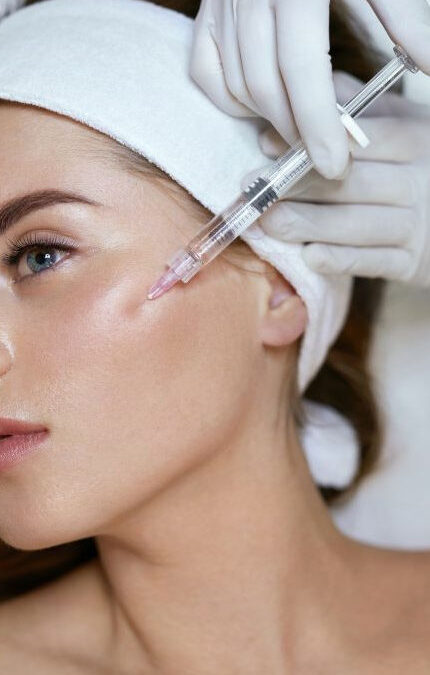
by laraibnaeem2005 | Aug 13, 2025 | Health
If you’ve invested in skin booster injections, you may wonder, “How to maintain results after skin booster injections?” These minimally invasive treatments are designed to deeply hydrate the skin, stimulate collagen production, and improve overall texture and elasticity. While skin boosters deliver noticeable improvements, proper maintenance is key to prolonging their effects. This article explores what skin booster injections are, how they work, their importance, types, preparation and aftercare, ideal candidates, how to choose the right clinic, risks and benefits, frequently asked questions, and tips for maintaining results.
What Is the Treatment and How It Works?
Skin Booster Injections In Dubai(حقن معزز البشرة في دبي) involve the administration of hydrating substances, such as hyaluronic acid, into the dermis. These injections enhance skin moisture, stimulate collagen and elastin production, and improve elasticity. Unlike dermal fillers that add volume, skin boosters focus on revitalizing overall skin quality, helping reduce fine lines, dryness, and dullness over time.
The effects of skin boosters are gradual, as collagen production increases and the skin retains hydration. This makes them an excellent treatment for those seeking subtle, natural rejuvenation rather than dramatic volume changes.
Importance of Treatment and Types of Skin Booster Injections
The importance of skin booster injections lies in their ability to restore hydration, improve elasticity, and support the skin’s natural regenerative processes. They also enhance the skin’s texture, making it smoother and more radiant.
Types of skin booster injections include:
-
Hyaluronic acid-based boosters for hydration and plumping.
-
Peptide-enriched boosters to stimulate collagen production.
-
Vitamin and antioxidant-infused boosters for nourishment and protection.
-
Customized blends targeting specific skin concerns.
Selecting the right type depends on individual skin goals, hydration needs, and the degree of aging or damage.
Preparation and Aftercare:
Preparation before skin booster injections includes:
-
Avoiding blood-thinning medications and alcohol several days prior.
-
Informing the provider about allergies, medications, or skin conditions.
-
Discontinuing harsh skincare products such as retinoids or exfoliants.
-
Ensuring clean, makeup-free skin on the day of treatment.
Aftercare is crucial for maximizing results and maintaining skin health:
-
Expect mild redness, swelling, or bruising at injection sites, which usually resolves in a few days.
-
Apply sunscreen daily and avoid direct sun exposure.
-
Avoid heavy exercise, saunas, or hot baths for 24-48 hours.
-
Follow any additional aftercare guidance provided by your practitioner.
Ideal Candidate and How to Choose the Right Clinic:
Ideal candidates for Skin Booster Injections(حقن معزز البشرة) include:
-
Individuals with dry, dull, or aging skin seeking hydration and texture improvement.
-
Those with early signs of fine lines or minor skin laxity.
-
People in good overall health with no active skin infections or severe allergies.
-
Patients who understand the need for maintenance sessions to sustain results.
Choosing the right clinic ensures safety and efficacy:
-
Verify practitioner qualifications and experience with skin boosters.
-
Ensure strict hygiene and safety protocols.
-
Confirm the use of authentic, approved products.
-
Look for personalized consultations and treatment plans.
Risks and Benefits:
Benefits:
-
Improved skin hydration, elasticity, and radiance.
-
Natural-looking rejuvenation without altering facial contours.
-
Prevention and reduction of fine lines.
-
Minimal downtime and discomfort.
-
Suitable for various skin types and ages.
Risks:
-
Temporary redness, swelling, or bruising.
-
Mild discomfort during injections.
-
Rare allergic reactions.
-
Infection risk if hygiene standards are not followed.
Proper preparation, skilled administration, and adherence to aftercare reduce risks.
Frequently Asked Questions (FAQs):
How long do results last?
Typically, skin booster effects last 4 to 6 months, depending on individual metabolism and lifestyle.
How can I maintain results longer?
Maintain a proper skincare routine, stay hydrated, follow sun protection, and schedule maintenance sessions as recommended.
Can skin boosters be combined with other treatments?
Yes, they can complement dermal fillers, Botox, and laser therapies for enhanced skin rejuvenation.
Is there downtime after the procedure?
Downtime is minimal, usually limited to mild redness or swelling that resolves within a few days.
How often should maintenance sessions be scheduled?
Maintenance treatments every 4-6 months help sustain optimal hydration and collagen stimulation.
Conclusion:
If you’re asking, “How to maintain results after skin booster injections?” the key lies in consistent aftercare, proper skincare, sun protection, and scheduled maintenance sessions. Skin booster injections provide a safe, effective, and minimally invasive way to rejuvenate skin, enhance hydration, and stimulate collagen production. By following these strategies, you can enjoy long-lasting, radiant, and youthful-looking skin, maximizing the benefits of your investment in this innovative treatment.
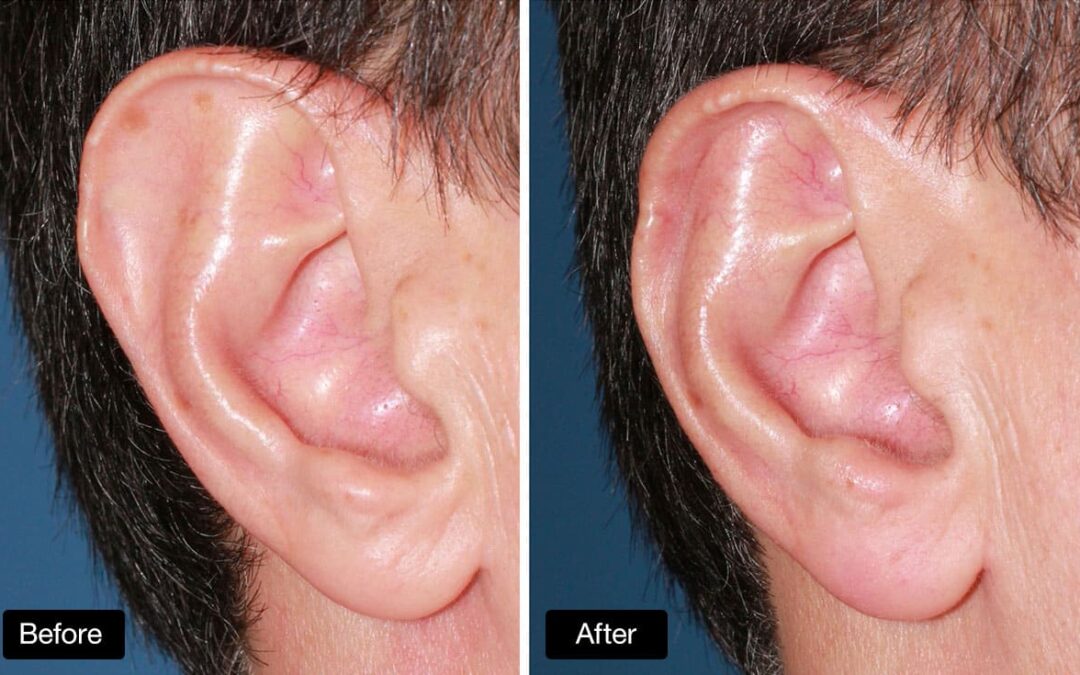
by laraibnaeem2005 | Aug 12, 2025 | Health
Ear shape irregularities caused by congenital conditions can impact both appearance and confidence from an early age. Many people wonder whether ear reshaping surgery can address these birth defects effectively. This procedure is designed to correct ear deformities, improve symmetry, and restore a natural contour. Whether caused by microtia, lop ear, or other congenital malformations, ear reshaping offers a permanent and tailored solution. Understanding how it works, its benefits, and what to expect can help you make an informed decision if you are considering this option for yourself or your child.
What is treatment and how it works?
Ear Reshaping Surgery In Dubai(جراحة إعادة تشكيل الأذن في دبي)—also known as otoplasty—focuses on altering the size, shape, or position of the ears. For birth defects, the procedure can involve rebuilding missing structures, correcting malformed cartilage, and restoring balance between both ears. Depending on the severity of the deformity, the surgery may involve cartilage grafting, skin adjustment, and precise suturing techniques. The aim is to achieve ears that look natural while maintaining proper function. This treatment is performed under local or general anesthesia, with methods customized to the individual’s age and condition.
Importance of treatment:
Congenital ear deformities not only affect facial aesthetics but can also influence emotional well-being, especially in children who may face teasing or self-consciousness. Early correction can help prevent long-term psychological impacts. Additionally, for certain birth defects, ear reshaping can improve the fit of eyewear, hearing aids, and other devices. The psychological boost and functional improvements make ear reshaping surgery an important consideration for those affected.
Types of treatment:
There are several techniques used for correcting birth defects through ear reshaping:
-
Cartilage graft reconstruction for missing ear structures
-
Setback otoplasty for protruding ears caused by congenital shape differences
-
Lop ear correction for ears that fold over at the top
-
Microtia reconstruction for severely underdeveloped ears
-
Combination procedures for multiple deformities in one surgery
Preparation and aftercare:
Before undergoing ear reshaping surgery for a birth defect, a full consultation and ear assessment are essential. You may be advised to avoid certain medications, maintain good skin hygiene, and arrange for post-surgery support. After the procedure, the ears are usually bandaged for protection and support. Swelling, mild discomfort, and temporary numbness are common but fade as healing progresses. Sleeping with the head elevated, avoiding pressure on the ears, and following wound care instructions are crucial for recovery.
Ideal candidate:
The best candidates for this procedure are children above the age of five (when ear cartilage is mostly developed) and adults with congenital deformities that can be corrected surgically. The ideal patient should be in good general health, have realistic expectations, and understand the potential outcomes. Those with severe medical conditions or unrealistic cosmetic goals may need further evaluation before proceeding.
How to choose the right clinic?
When selecting a facility for ear reshaping surgery, look for:
-
Surgeons experienced in congenital ear correction
-
A portfolio of before-and-after photos for similar cases
-
A clear explanation of the procedure and recovery process
-
Transparent discussions about risks and benefits
-
A supportive post-surgery care plan
Risks:
Like any surgical procedure, there are possible risks, including:
Benefits:
The main benefits of Ear Reshaping Surgery(جراحة إعادة تشكيل الأذن) for birth defects include:
-
Improved ear symmetry and contour
-
Enhanced facial balance
-
Boosted self-confidence and emotional well-being
-
Permanent correction of congenital deformities
-
Better comfort for wearing glasses or hearing aids
FAQs:
Can ear reshaping fix microtia? Yes, advanced cartilage reconstruction can create a natural-looking ear for microtia patients.
Is it better to have surgery as a child or adult? Early correction (after age five) can prevent psychological distress, but adults can also achieve excellent results.
Will the results last forever? Yes, the improvements are permanent as the reshaped cartilage maintains its new position.
Is the recovery painful? Mild discomfort is normal, but it is manageable with prescribed pain relief.
Conclusion:
For individuals born with ear deformities, ear reshaping surgery can be life-changing, providing both aesthetic and functional benefits. From correcting shape abnormalities to restoring balance and confidence, this procedure offers a permanent solution to congenital ear issues. If you or a loved one is affected by a birth defect, exploring the possibilities of ear reshaping surgery can be the first step toward achieving a natural, balanced appearance and improved quality of life.





